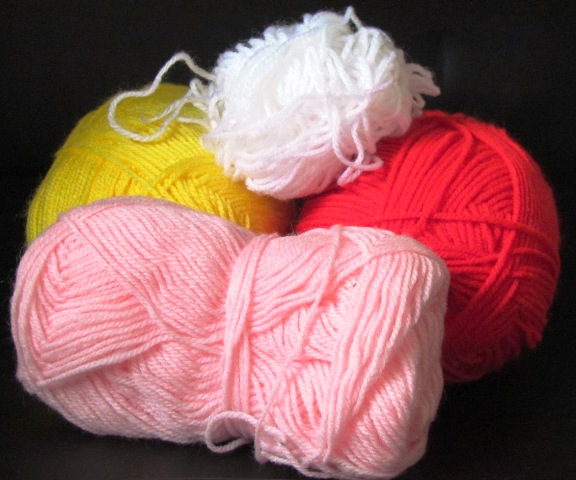What is Yarn or Wool?

Wondering what is yarn or wool? Choosing some knitting wool is usually predetermined when picking a pattern to knit an item.
The size of the item is also a limiting factor as a baby cardigan would not be knitted in chunky wool.
Just like an outdoor winter jumper would not necessarily be knitted out of fine 3ply wool.
Larger items can be made with fine wools but will take quite a while to knit.
What is yarn and where is it from?
There are many different types of sources that the wool can be made from either plant based, animal based or synthetic.
Animal Based
This is what most people would see wool as "coming from sheep" but other animals have wool made from their fleece and with different descriptions.
The fibres are obtained by shearing, brushing or moulting their winter coats.
Angora Hair or Angora Fibre
This is produced by the Angora Rabbit. It is the soft down layer that is used. It is soft and fluffy and is warmer due to having a hollow core that can trap air.
Alpaca
This comes from the fleece of an Alpaca. The fleece is from the Huacaya alpaca is similar to a sheep but is very fine, light and elasticated naturally.
Cashmere
This comes from Cashmere goats or Pashmina goats. The Cashmere goats have a double fleece and it is the softer undercoat that has to be separated from the coarser outer hairs before it is made into yarn.
Mohair
This comes from Angora goat hair. It is a strong but soft yarn that takes up dyes well. It can be used in blended yarns to add these qualities.
Lopi
This is wool from Icelandic sheep. The fleece has two layers a water resistant coarser outer layer and a finer warmer under layer. The wool production uses both of these together.
Merino wool
This comes from the fleece of Merino sheep and is one of the softest finest wools.
Silk
This is made from cocoons of silk worm insects.
The caterpillar feed on mulberry leaves and then, when the time is right, it spins a cocoon by producing this fibre in liquid form from the two spinning glands in its body. The size of the cocoons are near to the size of an egg from a pigeon.
Plant Based
Cotton
These fibres grow on a plant as a flower similar to a Hollyhock. The flowers come in red, white or yellow and when these die the seed pod opens to show the white hairy down. The long hairs that cover the seeds look like fine wool.
Pure Cotton tends to be a bit coarse but good for items like bags and placemats. There are different types of cotton such as Egyptian or American.
Linen
This is obtained from fibres in the stalk of the flax plant. The stalk is split and submerged in water for a few weeks to separate the fibres from the gluey substance that sticks them together.
These cotton and linen based wools can be mixed with other fibres to get different qualities.
Bamboo
The fibres that are found in bamboo are cellulose which can be removed by different methods. The wood fibres are crushed and can be broken down by a natural enzyme, this is then cleaned and made into yarn.
Synthetic
Acrylic is a well known one and can feel as soft and warm as pure wool. The advantage of acrylic is that it is machine washable so is great for baby items and pet items.
Nylon is usually mixed with other fibres to give added strength and it isn't usually used on its own.
Rayon is made from cellulose and made into threads.
Types of Ply
Different countries describe the thickness of the wool as "ply" or categories.
Ply
This is determined by how many strands make up the yarn. These strands are twisted together to make up the different plys.
The amount of single strands making up 3ply will be 3.
4ply is made use 4 single strands.
Double knitting is 8 stands.
Aran yarn is approx 16 stands.
Chunky is 12 stands but can be more.
Categories
These can be determined by weight Superfine, fine, light, medium, bulky and superbulky.
Buying wool
When walking into a wool shop, the varieties that are available is sometimes quite confusing. There are the pure wools, acrylics and varying mixtures in between so it is best to have an idea of what is needed before purchasing.
There are a lot of on line outlets shown on my shopping page.
Wool is usually bought in balls of different weights, it can also be bought in skeins or hanks but then wound into balls at home to stop it all getting tangled up.
There are also a lot of tools to help stop the wool from falling off a surface and traveling around the room.
Enjoy choosing your wool and beginning your project.
- Home
- Knitting for Beginners
- What Is Yarn
Affiliate offers
Please take care with any soft furnishing that it does not come into contact with any heat source.
If you have found an error on this page or want some more information on sewing cushions.
Please contact me . Thank you
New! Comments
Have your say about what you just read! Leave me a comment in the box below.